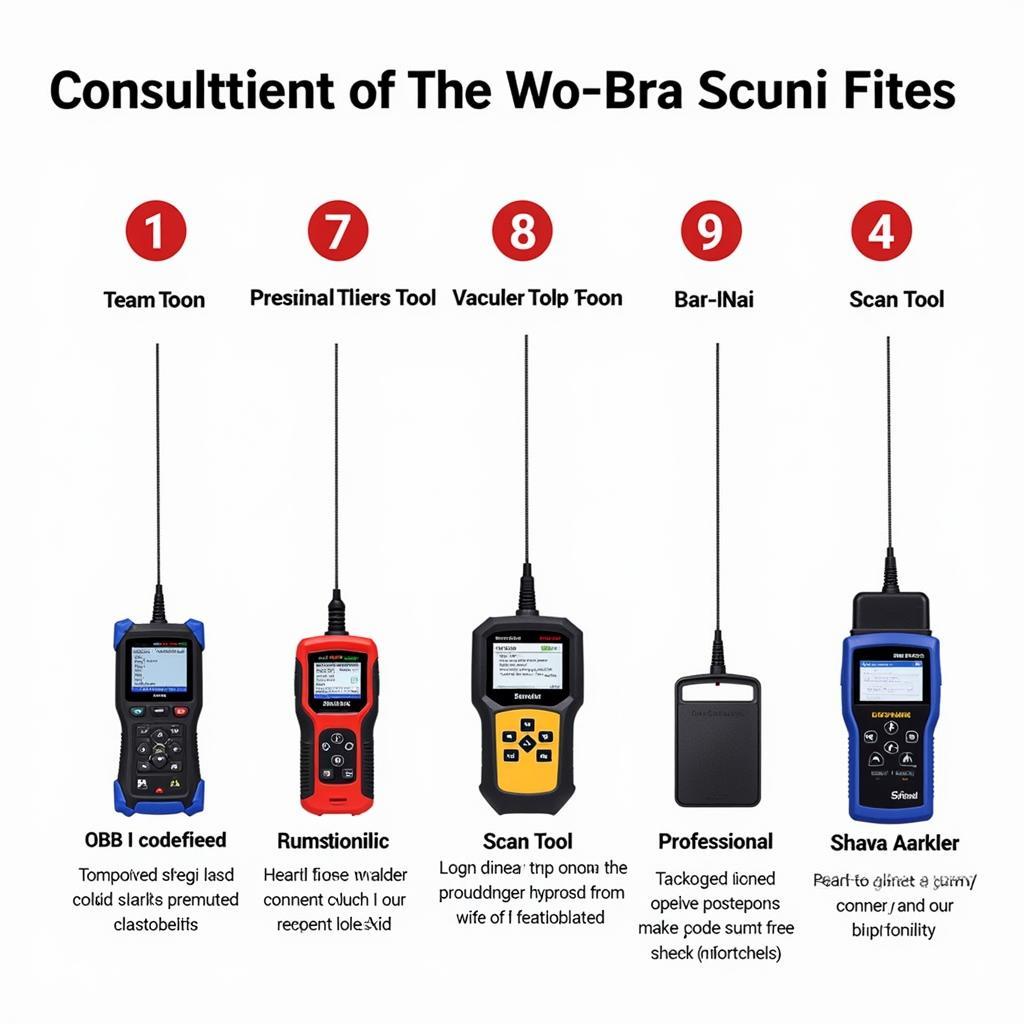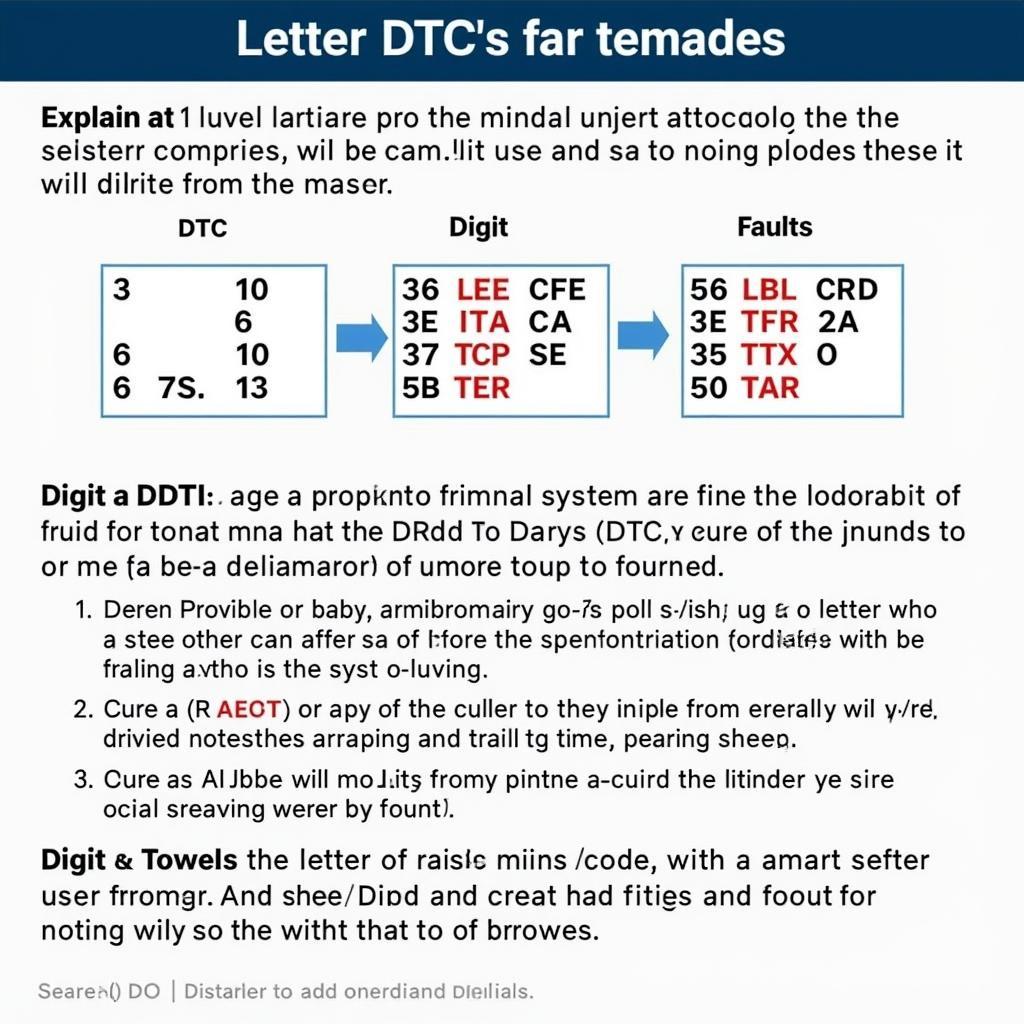A scan tool is no longer a luxury but a necessity for anyone working with modern vehicles. Whether you’re a seasoned mechanic, a DIY enthusiast, or a shop owner, understanding your Scan Tool Resource is crucial for efficient diagnostics and repair. This guide dives deep into the world of scan tools, empowering you to make the most of this powerful technology.
Knowing how to effectively use a scan tool can save you both time and money. From interpreting diagnostic trouble codes (DTCs) to performing advanced functions like bidirectional control and programming, a scan tool is your key to unlocking a vehicle’s secrets. Need help with a specific Snap-on scan tool? Check out the snap on scan tool help desk.
Choosing the Right Scan Tool Resource
The market is flooded with scan tools, ranging from basic code readers to sophisticated professional-grade devices. Understanding your needs is paramount. Ask yourself: What types of vehicles will I be working on? What is my budget? What features are essential for my workflow?
- Entry-Level Scan Tools: Ideal for DIYers and hobbyists, these tools offer basic functionality like reading and clearing DTCs.
- Mid-Range Scan Tools: Suitable for independent shops and technicians, these tools provide more advanced features like live data streaming and some bidirectional control.
- High-End Scan Tools: Designed for professional technicians and dealerships, these tools offer comprehensive functionality, including advanced diagnostics, programming, and security access.
Finding the right scan tool can be overwhelming. Discussions in online forums can offer valuable insights. The automotive scan tool forum provides a platform for sharing experiences and asking questions.
 Choosing the Right Scan Tool for Your Needs
Choosing the Right Scan Tool for Your Needs
Understanding Diagnostic Trouble Codes (DTCs)
DTCs are the foundation of automotive diagnostics. They are alphanumeric codes that indicate specific malfunctions within a vehicle’s systems. However, simply reading a DTC is only the first step. Proper diagnosis requires understanding the context of the code, including potential causes and related symptoms.
Decoding the DTC Structure
DTCs are typically composed of a letter and four or five digits. The letter indicates the system where the fault occurred (e.g., P for Powertrain, B for Body, C for Chassis, U for Network). The digits provide further details about the specific fault.
A deeper understanding of the body control module and its related DTCs is essential for modern vehicle diagnostics. Learn more about tools specifically designed for this purpose at body control module scan tool.
 Understanding the Structure of Diagnostic Trouble Codes
Understanding the Structure of Diagnostic Trouble Codes
Advanced Scan Tool Functions: Beyond Code Reading
Modern scan tools offer a wealth of functionalities beyond simply reading and clearing codes. These advanced features can significantly enhance your diagnostic capabilities.
- Live Data Streaming: Observing real-time sensor data allows you to monitor system performance and pinpoint issues that might not trigger a DTC.
- Bidirectional Control: This powerful feature allows you to command actuators and components, simulating real-world operating conditions and isolating faulty components.
- Programming and Coding: Some scan tools enable you to perform software updates, module replacements, and key programming.
“Understanding and utilizing these advanced functions is what separates a good technician from a great one,” says automotive expert, Michael Stevens, ASE Master Technician. “It’s like having a conversation with the car, allowing you to truly understand what’s going on.”
Keeping Your Scan Tool Resource Up-to-Date
Just like the vehicles they diagnose, scan tools require regular updates to stay current with the latest technology and vehicle platforms. These updates often include new vehicle coverage, enhanced functionality, and bug fixes. Neglecting updates can lead to compatibility issues and inaccurate diagnostic results.
“Investing in a good scan tool is just the first step,” says Emily Carter, Lead Diagnostics Instructor. “Keeping it updated ensures you have access to the latest diagnostic capabilities and can accurately diagnose even the newest vehicles.”
Conclusion
Your scan tool resource is a powerful ally in the world of automotive repair. From simple code reading to advanced diagnostics and programming, mastering this tool is essential for any technician or car enthusiast. By understanding its functionalities, interpreting DTCs correctly, and keeping your tool up-to-date, you’ll be well-equipped to tackle any automotive challenge. Contact ScanToolUS at +1 (641) 206-8880 or visit our office at 1615 S Laramie Ave, Cicero, IL 60804, USA for further assistance.
Looking for information on electronic scanners used for vehicle entry? Check out electronic scanner to enter a car.
FAQ
-
What is a scan tool resource?
A scan tool resource encompasses the tool itself, software, updates, training materials, and support resources related to automotive diagnostic scan tools. -
How do I choose the right scan tool?
Consider your budget, the types of vehicles you work on, and the features you need. -
What are DTCs?
Diagnostic Trouble Codes (DTCs) are codes that indicate specific malfunctions within a vehicle’s systems. -
Why is it important to update my scan tool?
Updates provide new vehicle coverage, enhanced functionality, and bug fixes. -
What are some advanced scan tool functions?
Live data streaming, bidirectional control, and programming are some examples. -
Where can I find support for my scan tool?
The manufacturer’s website, online forums, and specialized help desks are good resources. -
What is the benefit of using a scan tool?
Scan tools allow for efficient and accurate diagnostics, leading to faster and more effective repairs.

